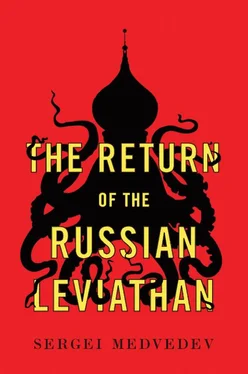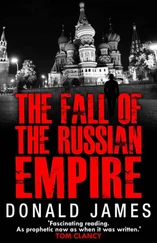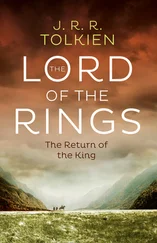This is why the first Ukrainian revolution of 2004, and particularly the second of 2013–14, were such a blow to Russian pride. The declaration about their own values and priorities was a clear demonstration that Ukrainians did not want to be simply ‘the little brother’. And Crimea and the Donbass were the ‘Russian world’s’ answer to the Maidan, as the Ukrainian revolution has been called. [30] The Maidan – Freedom Square – as the main square in Kiev was named after the break-up of the Soviet Union, was the centre of the protest movement that eventually brought about the fall of the regime of the pro-Russian President, Viktor Yanukovych, in February 2014.
This was not simply a geopolitical takeover, but a demonstration of the superiority of one civilization over another; the idea that, under Russia, Crimea and Eastern Ukraine will have a happier and richer life.
What happened as a result, though, is well known. Crimea is effectively living in a state of emergency. Water supplies are insufficient, and electricity is constantly being turned off. It is struggling as a holiday resort: in 2013 there were six and a half million tourists; this fell to three and a half million in 2014. Prices have risen by 50 per cent, and there has been a mass seizure of private businesses under the guise of ‘nationalization’. The peninsula has been turned into a huge military base, with the abuse of the rights of civil activists and repression of Crimean Tatars. Dozens of people have been tortured or simply disappeared without trace, and thousands of refugees have fled to mainland Ukraine. The road and rail blockade of Crimea has caused increased chaos on the ferry from the Russian mainland to Kerch, only slightly lessened by the construction of a bridge. Even with this bridge, Crimea is less of a peninsula; rather, it is a besieged island.
And if the ‘little green men’ who invaded Crimea were nicknamed ‘the polite people’ (as the propaganda called the Russian special forces in their unmarked uniforms), the Russian volunteers and full-time soldiers who entered the Donbass in their hastily renumbered military vehicles with the markings scratched out were anything but polite. The result is that up to ten thousand people have been killed and a million refugees have fled. The Donbass has been destroyed and turned into a humanitarian Chernobyl, [31] In April 1986, an explosion at the Chernobyl nuclear power plant in Ukraine caused an ecological disaster in the surrounding areas of Ukraine and Belarus. It remains the world’s worst nuclear disaster.
an open wound of the kind that did not exist even after the collapse of the USSR. One year after the event, the results of the ‘Russian invader’s’ actions in Ukraine have been catastrophic; but this fact does not worry those who created the viral video. The video has had an excellent effect on the internal audience, sowing chauvinism and hatred. By calling itself an ‘invader by birthright’, Russia is most of all occupying itself.
The patriot’s dream has come true: Russian SU-34s are proudly flying over far-off colonial lands and dropping smart bombs on nasty men with beards – just as American F-16s did in the skies over Kosovo and Iraq. In briefings to the General Staff, dashing officers show videos from the optics of the missiles’ homing devices: the ground gets closer and closer in the crosshairs of the sight; you can see buildings, cars and people; then you see the silent cloud of the explosion and all these items have been turned to naught – just like the Americans did in Iraq! Russia is once again in the premier league of geopolitics and it can bomb whomsoever and wheresoever it likes! The country looks on, bewitched by this hi-tech show, which is so strikingly different from the blood, dirt, crying children and incinerated tank crews in the Donbass; even the colours are fashionably calming: the cloudless blue sky and the sandy-coloured desert. A collective anaesthetic is applied to the consciousness of the masses, which has been exhausted by the news from Ukraine.
I remember how it was sixteen years ago, when an ageing NATO, seeking enemies and a purpose in the wake of the Cold War, unleashed the full strength of its air forces against Serbia. The seventy-nine-day air war in Kosovo became one of the more shameful pages in the history of the North Atlantic Alliance: cities, passenger trains and buses, which in just the same way came within the crosshairs of the missile’s sight, all destroyed, leaving more than five hundred civilians dead. And I remember how old Europe forgot about the values of humanity and went completely mad in a militaristic rage: in Britain, the Sky News television channel jealously counted the number of sorties flown by the Royal Air Force; in Germany the Bild newspaper wrote up the bombings as if it were talking about Michael Schumacher’s races: ‘The German Tornados are taking-off in pole-position!’ Now Russia, offended by its apparent geopolitical losses, has decided to get its own back on the West by means of a virtual, telegenic and, it seems, safe postmodern war, answering the principal question of Russian life in the twenty-first century: if the Americans can do it, why can’t we?
The first virtual war was described by the French philosopher, Jean Baudrillard, in his book The Gulf War Did Not Take Place . For him, Operation Desert Storm in January and February 1991 was not a war but a media spectacle of the aerial destruction of the Iraqi Army. Desert Storm was the first war in history formatted by the media. For example, at the request of CNN, some of the bombing missions were carried out at night – even though this increased the risk of collateral damage and even friendly fire incidents; but CNN wanted this because it produced even more spectacular television pictures. Eight years later, in Kosovo, the technology for showing war reached a new level. The homing devices in the warheads of the bombs and missiles had become television cameras. In a world where the mass media rules, the aim of the war becomes not winning but showing; not capturing territory but capturing the audience. It is likely that the day is not far off when miniature cameras in bullets will show in slow motion how they approach a person (let us say, a terrorist) and enter his body – the ratings will be sky high. And from here it is just a short step to the idea of a demonstration war, even one for fun, like the one described by the Russian fiction writer Viktor Pelevin in his anti-utopian novel, S.N.U.F.F. He wrote about drones equipped with both television cameras and machine guns, flown by a long-distance operator, which at one and the same time shoot the enemy’s soldiers and film it for the television evening news.
The postmodern war is like a computer game. Together with the virtualization and dehumanization of the enemy, it becomes as safe as an electronic game, the aim being to have no losses for the technologically superior civilization. The death of Western military personnel becomes both an image problem and a legal problem, which they try to minimize. Already today, widows of British Army officers are filing multimillion-pound claims against the Ministry of Defence, demanding extra compensation for the death of their husbands in Iraq, as if death was not one of the professional risks an officer takes in a war zone. A hedonistic society is no longer prepared to come to terms with the death of its soldiers.
And now, inspired by the bloodless successes of ‘the little green men’ in Crimea, and wishing to demonstrate the technical modernization of the armed forces over the past few years, Russia has decided to stage its own exhibition war in Syria: ‘Ladies and Gentlemen, we present “Patriot” on tour.’ The newest name for an arm of service – the Air-Space Troops – suggests a futuristic mode: now we are going to be shown Star Wars, the battles of the future! This is exactly how the Russian media paints the operation in Syria: as an easy war, a bloodless game of noughts and crosses; a bit of fun in which these heroes with their high technology, these terminators in their hermetically sealed helmets, destroy an abstract, dehumanized, evil enemy. The reports issued by the General Staff amaze us with their attention to detail: workshops making suicide vests, warehouses with spare parts, garages housing pick-ups and armoured vehicles, headquarters and training camps – all are destroyed. All one can do is marvel at the professionalism of the Russian intelligence services, who know the enemy’s territory right down to the last bush. It is as if we are being given the chance to take part in an online shooting game: from underneath the wing of the jet fighter, take aim at the houses, the sheds and the hangars from which these funny little men are running. Television reports either that these fighters are running away, shaving off their beards and putting on niqabs, or turning up by sea in Odessa in their thousands, before going on to the Donbass to fight against the pro-Russian separatists.
Читать дальше












